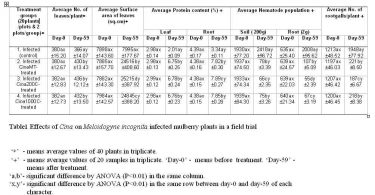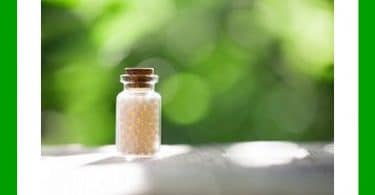Providers of complementary and alternative medicine are coming under increasing pressure from regulators and orthodox prescribers to justify the use of homeopathic products and processes. There are few healing modalities that come under as much pressure for this requirement as homeopathy. The lack of a clearly defined mechanism and the difficulty that orthodox science has in accepting that extremely small doses of therapeutic materials could have any clinical effect, make any research that validates homeopathy very important for those who use it. Past issues of this journal have looked at extracts from some of the more important positive trials for homeopathy, and following are brief examinations of trials that add to those previously mentioned.
Human Studies
1. Gerhard I., Wallis E., Individualised Homeopathic Therapy for Male Infertility. Homeopathy, 2002, 91, 133-144. An observational pilot study investigated the effect of individualised homoeopathic therapy for 45 sub-fertile males, with specific reference to sperm count and quality, hormone levels and the general level of health. Sperm count and sperm motility were improved by homeopathy and the improvement was comparable with conventional treatment.
2. Rastogi D.P., Singh V.P., Singh V., Dey S.K., Rao K., Homeopathy in HIV infection. British Homoeopathic Journal, 1999, 88, 49-57. In a randomised double-blind placebo controlled trial, 50 people with asymptomatic HIV infection and 50 people with symptomatic (persistent generalised lymphadenopathy) HIV infection and were given either placebo or an individualised homoeopathic medicine. Using numbers of pre and post treatment CD4+ve T-lymphocytes as a measure, it was found that homoeopathic treatment was successful for symptomatic HIV sufferers, but not for asymptomatic sufferers.
3. Weiser M., Clasen B.P.E., Controlled Double Blind study of a Homoeopathic Sinusitis Medication. Biological Therapy,1995, 13, 1, 4- 11. In a randomised double-blind placebo controlled trial, 155 people suffering from sinusitis were given either a placebo or a homoeopathic combination (Heel Euphorbium compositum). Subjective responses showed a greater improvement in those using the homoeopathic combination.
4. Tuten C., McLung J., Reducing Muscle Soreness with Arnica Montana. Alternative and Complementary Therapies, December 1999, 5, 6, 369- 372. 23 people were given either placebo or Arnica 6X for the management of delayed onset muscle soreness after exercise. Outcomes were assessed subjectively by the participants themselves, and by creatinine kinase (CK) assays. CK levels are indicative of muscle or connective tissue damage. While there was only a small subjective difference between the 2 groups, the people using Arnica 6X produced less CK than those using placebo, which tends to indicate that those using Arnica experienced less tissue damage on exertion.
5. Strauss L. C., The Efficacy of a Homeopathic Preparation in the Management of Attention Deficit Hyperactivity Disorder. Biomedical Therapy, 2000, 18, 2, 197- 201. 20 children suffering from ADHD, were given either placebo or a homoeopathic combination (Heel Selenium-Homaccord) and were assessed in accordance with pre and post test conduct and psychosomatic problems, impulsivity and anxiety. The homoeopathic combination provided superior results to placebo.
6. Shackleton M.F., Tondora C.M., Whiting S., Whitney M., The Effect of Homeopathic Coca on High Altitude Mountain Sickness. Complementary Health Practice Review, 2000, 6, 1, 45- 55. 11 member of the 1998 Everest Challenge Expedition were given either placebo or Coca 200C daily. Assessed on the primary symptoms of altitude sickness as well as oxygen saturation, those using the homoeopathic medicine showed less signs and symptoms of altitude sickness.
7. Zambrano O.C., The Effects of a Complex Homoeopathic Preparation on Aerobic Resistance, Aerobic Capacity, Strength and Flexibility. Biomedical Therapy, 2000, 18, 1, 172- 175. 25 people were assessed before and after exercise for the effects of a homoeopathic combination (Rendimax) on their cellular oxygenation rate, lactate accumulation and recovery time after exercise. These were compared with the same parameters for 25 people who had undergone the same exercise regime. Those using the homoeopathic combination exhibited improvement in all parameters measured.
8. Schmidt C. A., Double Blind, Placebo-Controlled Trial: Arnica montana Applied Topically to Subcutaneous Mechanical Injuries. Journal of the American Institute of Homeopathy, Winter 1996, 89, 4, 186- 193. In this trial 141 runners were asked to use topical preparations containing placebo, Arnica 1X or Arnica 6C, and to rate the effectiveness of the preparations at relieving post-exercise muscle soreness. The preparation containing Arnica provided superior results to placebo and preparation containing Arnica 1X was reported to be superior to that containing Arnica 6C.
9. Clark J., Percivall A. A., Preliminary Investigation into the Effectiveness of the Homoeopathic Remedy, Ruta graveolens, in the Treatment of Pain in Plantar Fasciitis. British Journal of Podiatry, 2000, 3, 3, 81- 85. In a randomised double-blind trial, 14 people suffering from plantar fasciitis were given Ruta graveleons 30C or placebo. Those using the Ruta reported a greater level of pain relief than those using placebo.
10. Campistranous- Lavout J.L., et al, Hypertension Trial. Boletin Mexicano, 1999, 32, 42- 47. 68 people suffering from mild to moderate hypertension were enrolled in a double-blind randomised clinical trial comparing individualised homoeopathic therapy with placebo. Successful results were obtained with 82% of those using homeopathy compared with 57% of those using placebo.
11. Kulkarni A., Nagarkar B.M., Burde G.S., Radiation protection by use of homoeopathic medicines. Proceedings from the 8th Conference of Radiation Oncologists of India, Bombay, December 1986, reported in Hahnemann Homoeopath Sand, 1988 Jan,12, 1, 20-3. 82 patients receiving radiotherapy were randomly assigned to receive placebo, Cobaltum 30C or Causticum 30C as a means of assessing their affect against dermatological reactions to the radiotherapy. The homoeopathic medicines provided a significant reduction in the degree of radiation reactions when compared to placebo.
In Vitro Studies
1. Sukul N.C., De A., Sukul A., Sinhababu S.P., Potentised Mercuric Chloride and Mercuric Iodide enhance Alpha Amylase activity in vitro. Homeopathy, 2002, 91, 217-220. In part a repetition of a trial published in 1954, researchers determined that Mercuric chloride 30C and Mercuric iodide 30C, both of which theoretically should contain no molecules of either of the original substance, were able to promote the hydrolysis of starch in vitro. This tends to support the view that the water molecules in the remedy retain the “memory” of the original molecule through the potentisation process.
2. Casaroli- Marano R.P., Alegre J., Campos B., Infrared Changes in Potentised Solutions. Revista Homeopatica, 1998, 38, 5- 12. In this experiment, 70% alcohol/water solutions were serially diluted 1 in 100 up to 30 times, with and without succussion at each step. There were significant spectral differences between the solutions that were succussed and those that were not, indicating that dilution and succussion may produce structural changes to the molecules in the solution. This may provide further evidence for the possibility of a “memory” of water.
3. Moss V.A., Roberts A., Simpson K., Action of Remedies on Movement of Macrophages and Leucocytes. Homeopathy, 2002, 91, 113-114. Laboratory measurements of guinea pig macrophages and human leucocytes exposed to the homoeopathic remedies Belladonna, Hepar sulph, Pyrogenium, Silica and Staphylococcinum, showed that these remedies caused an increase in the movement of these cells through a Boyden micropore filter. This may indicate that the remedies produce an increase in immune competence.
Animal Studies
1. Ruiz-Vega G., Perez-Ordaz L., Cotez-Galvan L., Juarez-G F.M., A Kinetic Approach to Caffeine- Coffea cruda Interaction. Homeopathy, 2003, 92, 19-29. In this blinded and controlled study, rats were given caffeine and then Coffea 30C in an effort to determine what effects, if any, the Coffea 30C had on sleep characteristics. The homoeopathic remedy was found to increase the intensity of sleep in the rats when compared with the effects of the control used.




